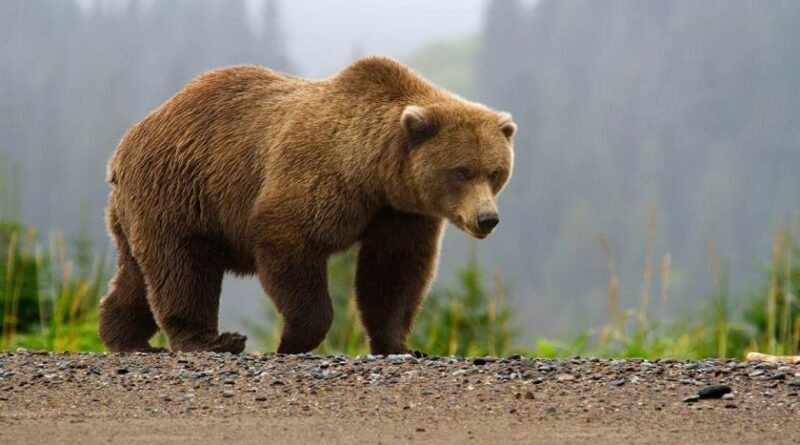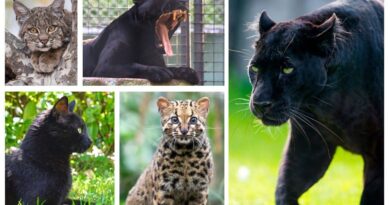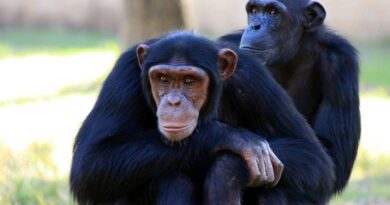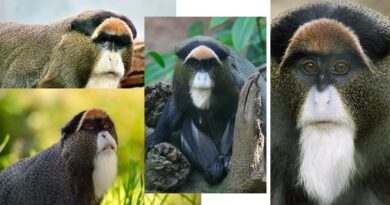Bear
We’re all familiar with the cuddly ‘teddy bear,’ but what if we encountered a genuine bear? Would it be so welcoming? What are the facts about the brown bear in the wild?
Baby bears are anything but cuddly when they are born. They’re tiny, nude, and blind, and they resemble obese rats rather than newborn bears. A litter normally has two puppies, and even if you put the two of them on the scales together, they’d be so small that they’d weigh less than the book you’re holding. Her cubs are at least a hundred times heavier than the mother bear.
Snug, an underground den, is where the cubs are born. At the start of the long, cold winter, the mother prepares the den. If she can’t find a peaceful corner in a cave, she digs a hole in the ground beneath some rocks or an old tree big enough for her and her babies. She then cuddles up and falls asleep. The babies are born two or three months later. The weather is bitterly cold outside the den, but the tiny cubs are kept warm by their mother’s massive body. They stay with her in the den for three or four months, feeding on her milk. The cubs then venture out into the sunshine for the first time as spring weather arrives. They are starting to resemble toy teddy bears at this point. They start to explore the wonderful world outside the den, small, rounded, hairy, and with a bouncy playfulness. Their mother stays close by, keeping a watchful eye on them and defending them against any attackers. The cubs had little to fear from anything except human hunters, thanks to the mother bear’s enormous power.
They stick close to their mother while she travels in search of food. She eats a wide variety of foods, but she always looks for the juiciest. She hunts for ripe fruits, berries, and nuts using her keen sense of smell. With her muscular claws, she digs for roots and bulbs in the ground. She goes frog hunting in small ponds and salmon fishing in fast-moving rivers. If she comes to a breeding bird’s nest, she eats a short supper of uncooked eggs. If she discovers burrowing rats or mice tunnels, she sniffs the ground with her huge nose before scrabbling in the dirt with her paws, digging down to the hidden nests below. She catches up her prey greedily in her muscular jaws if they are too slow or stuck in the falling earth. If she sees a larger prey animal, she charges at them with a galloping run that is astonishingly swift for such a massive creature. She is said to be capable of reaching speeds of up to 30 miles per hour. She kills a small deer with forceful punches from her front foot after catching up with it. She also kills domestic sheep if she gets the chance, which makes her a farmer’s nemesis. As a result, bears have been hunted and killed in the thousands every year since the beginning of agriculture. Bears will consume dead animals and even insects if there is nothing else available. And, certainly, bears adore honey and are prepared to endure hundreds of stings from angry bees in order to put it.
During the summer, the young bears mature and learn which things to eat and which to avoid by feeding alongside their mother. When the winter arrives, they all retreat to their sleeping den. The mother does not produce any new babies in the den this time. She’s curled up with her elder cubs, sleeping soundly. When the next spring arrives, they will all begin feeding again, but this time the much larger cubs will most likely go off on their own, and by the third winter, they will have built their own dens. When they’ve left, the mother mates with a stray male and returns to her winter den, where she’ll be ready to produce birth to another litter.
Each female bear has her own patch of land that she uses as a feeding ground. The male bear is less territorial than the female. He travels around, taking up a lot of information. travelling across the territory of multiple females and covering a larger region He’s a great guy.
In the summer, if she is prepared to start a new brood, she is always ready to mate with one. The female, on the other hand, will mate with any male who comes her way. Males are much larger and stronger than females, but they do not use their superior strength to protect their mates. In fact, they don’t have much time for them. Once a male had mated, he delegated all parental responsibilities to the female. She’ll have to rear the cubs on her own. As a defence against rival male bears, his tremendous size and power are required. These males will attempt to scare him away from the girls in order to mate with them instead. To frighten away rivals, each male must appear as huge as possible.
Humans who visit the woodlands where wild bears live are occasionally attacked. These strikes are a huge blunder. Bears have a fantastic sense of smell, but their eyesight isn’t so great. They believe that if they see a human going along, it may be a competitor bear standing up on its hind legs in a threat demonstration. As a result, they charge, rear up, and threaten to retaliate. If the human is a deer hunter with a gun, he will frequently panic and shoot the bear. If he is unarmed, the bear will occasionally kill him, and the fact that he is rarely eaten afterward suggests that the bear saw him as a contender rather than a prey animal.
Brown bears require so much area to live that their numbers are dwindling. The last bears in Britain were killed over a thousand years ago. There are only 30 wild wolves left in France today. There are only 300 of them left in Europe. They do better in the colder parts of North America, Scandinavia, and Russia, but hunters still kill a large number of them each year. The brown bear is one of seven species of bears that exist today. It is the most common and widely distributed. Brown bears from the far north’s Kodiak Island are the heaviest of all land meat-eaters.
When a huge male rears up, it can reach a height of 2.7 metres, dwarfing the human form. Another huge variety of brown bear found in the colder regions of North America is the well-known grizzly bear. The American black bear is a significantly smaller and quieter animal. Year after year, it is hunted down and slaughtered by so-called sportsmen, but it manages to survive thanks to its intellect and shy attitude. Only one species of Spectacled Bear may be found in South America. It has white fur rings around its eyes, as if it were wearing huge sunglasses. There are barely 2,000 of them left on the planet today. They prefer humid, hot woodlands, where they can climb trees in search of fruits. If they’ve had a good meal, they’ll make a bed of broken branches high up in the trees and sleep there before continuing their search for food.
There are three other tropical bears, all of which live in Asia’s torrid woods. The shaggy sloth bear, the small sun bear, and the stocky Asian black bear are the three species. They all wear black fur jackets with whitish patterns on their chests. The sloth bear has a long, curved snout and long claws. In search of insect food, it digs into termite hills or tears the bark off trees using its muscular feet. When it finds its prey, it closes its nostrils entirely and pushes its long nose into the hole it has created, sucking the insects into its tube-like mouth.
The sun bear is the tiniest of all the bears. It has a body length of just over a metre. They are night-feeding animals who are shy and not threatening to humans. They are the quickest climbers. In fact, they spend the most of their time in the trees, resting on small platforms made of twigs and branches during the day. The Asian black bear, often known as the moon bear because to the pale moon-shaped patch on its chest, is a large-eared animal with a thick mane of hair around its neck and shoulders. It weighs twice as much as the little sun bear, although it lives in the same tropical jungles of Asia as the little sun bear.
Finally, there’s the huge white polar bear, which boasts a gigantic, streamlined physique, massive feet, and a long neck. The polar bear, unlike all other bears, eats only meat. It’s a vicious murderer who prefers to hunt down and consume seals whenever it can. Polar bears frequently congregate around the bodies of the dead to eat the flesh of whales that have washed ashore.
Although not as heavy as the largest brown bear, the polar bear has the distinction of being the longest bear, with males reaching about 3 metres from nose to tail. They’re excellent travellers. They may traverse more than 600 miles in a year and many miles in a single day in their never-ending search for food in the freezing wastelands of the far north. Consider what it must be like for such an animal to spend its entire life in a small zoo cage.
Bears are amazing creatures, yet they have almost always been mistreated by people. Real bears would have a much better chance of surviving if we treated them with the same compassion we show our toy teddy bears. They will soon vanish forever if we continue to hunt and kill them as viciously as we have in the past.
When we were kids, most of us had a toy teddy bear, but few of us remember how it gained its name. What is the significance of a Teddy Bear? Why not a Billy Bear or a Freddie Bear? Teddy is not short for Edward, as many people believe.
The genuine story goes like this: the President of the United States was on a bear hunt in Mississippi ninety years ago. His hosts were furious because they were unable to find a large bear for him to shoot. They brought him a small bear cub as a final resort, hoping that his visit would not be a complete flop. When the President saw the forlorn little animal, he refused to kill it. A newspaper published a cartoon depicting the incident and complimenting him for his devotion to the cub. Overnight, the small bear became renowned. Theodore Roosevelt was the President’s name, and his nickname was Teddy, which is short for Theodore. Teddy’s Bear’ was the name given to the bear, and it quickly became a popular toy. Teddy’s Bear’ was eventually reduced to Teddy Bear’. That all happened in 1902, and teddies have been soothing pals for millions of youngsters ever since.



